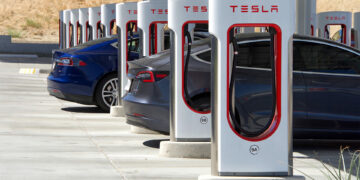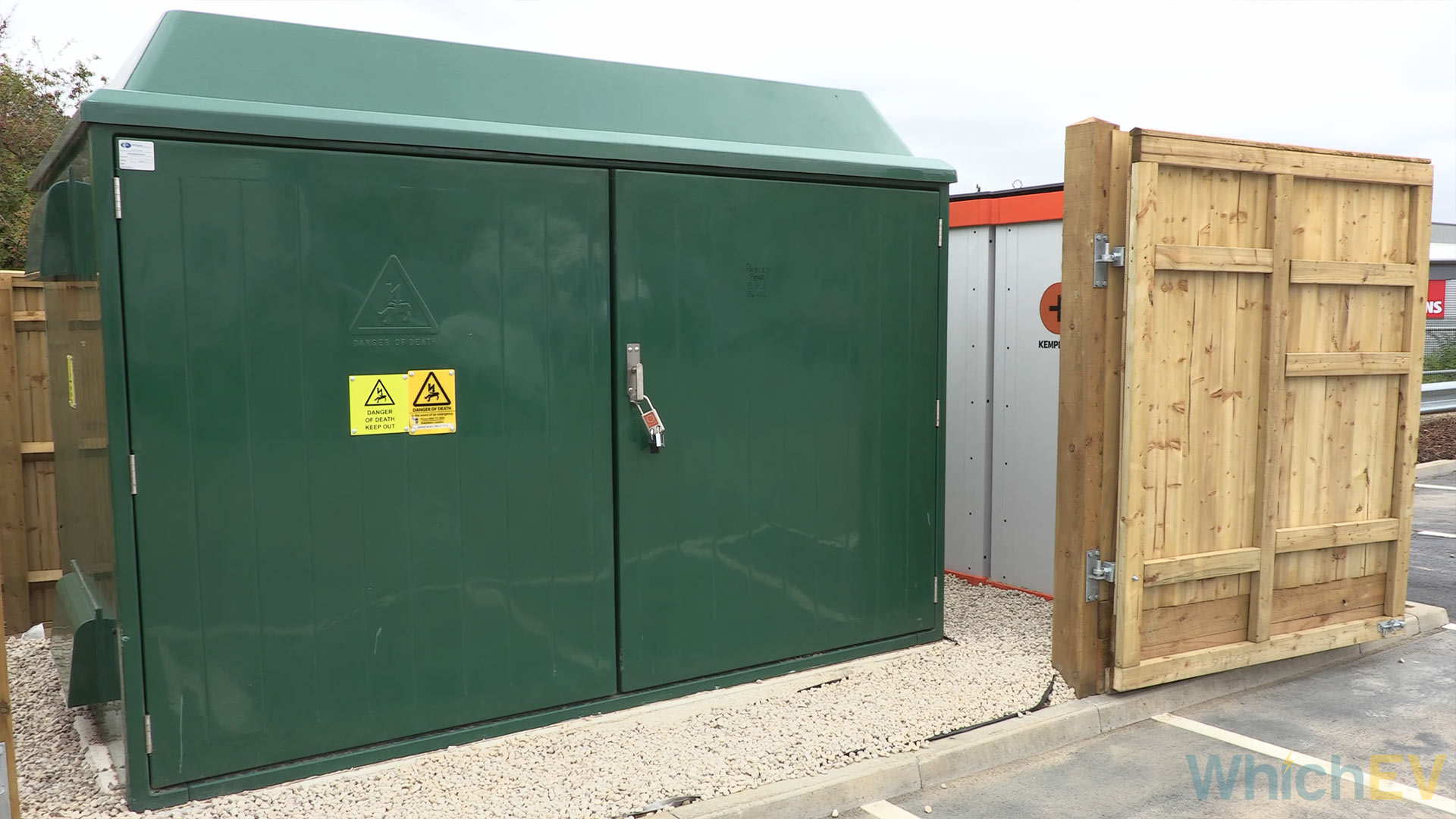Installing a consumer charger is a relatively simple business. Contacting your local Distribution Network Operator (DNO) for an authorisation code, getting a qualified electrician in for the install and testing and then using your new home charger is really straightforward. However, doing the same thing for a commercial premises can be rather more complicated. While at the recent opening of the new Osprey super hub at the Paisley Pear pub in Brackley, we met up with Adam Miller (CCO) from ESPUG, and he's an expert at helping business customers get the charging set-up they need.
While most homes will have a 7kW charger installed, the Osprey Super Hub on Marston's property is able to deliver 100kW to eight EVs at the same time, and up to 150kW to a few if others are less utilised. That needs physical space, access rights, grid capacity and a commercially viable point of connection – and it can be a complex process.
The first time you start to think about these things, it can sound daunting – but it doesn't need to be. Companies like ESPUG are licensed to operate energy networks by the industry regulator OFGEM and they've helped create the right kind of supplies for a huge number of customers.
Adam told us that there are four key areas that business owners/operators need to consider before moving their organisation across to an electric platform:-
Overall Numbers
It's important to work out how many vehicles need to be charged at the same time, in how many bays, to what level (in terms of kWh) and over what time period to derive how much capacity KVA (Kilo Volt Amperes) is required. This data will allow you to calculate the load/capacity (expressed in KVA) that you will need, in order to achieve your aims.
Choosing slower AC chargers or very rapid DC units will be a major factor – both in terms of cost and power requirement. A commercial super-hub might offer 8x points where drivers can get up to 100kW each for a total of 800kW. A hotel offering overnight charging with standard/slow units, could supply around 100 cars with 7kW each and still not hit 800kW of simultaneous draw.
Also useful to know is whether your business expects to generate any power onsite (possibly through solar panels) and whether you plan to store any spare/excess generation via battery. All of these factors can affect the input capacity required from the grid.
Existing Capacity
All commercial sites will have some kind of electrical connection. It's possible that this connection has been downgraded in recent years – for example following the advance of an energy consultant who may have advised that a smaller draw will lead to lower energy bills. Now you're going to need a lot more capacity and most organisations don't have any to spare.
It's worth noting that the UK may move away from gas for heating, which will mean an even bigger draw from the grid in the future. This kind of foresight from an expert consultant will be really valuable and save you money in the long run.
New Grid Connections
Given the large potential increase in requirement and the sparsity of excess supply to most commercial premises, at this stage it's likely that you will need to consider a new grid connection.
Charging equipment providers and Charge Point Operators are generally able to assist. Many of them come to places like ESP Utilities Group, where there is already a concentration of expertise when it comes to identifying and seeking a commercially viable Point of Connection to the Grid. It is a reality that the capacity we all need to be able to deliver on our net-zero plans is becoming an increasingly scarce commodity. Existing network capacity is going to experience struggles when it comes to keeping up with increasing demand.
Allow Plenty of Time
Once a commercially viable Point of Connection has been identified, companies like ESPUG can help you to source connection contractors who are able to deliver the necessary work, at best value, and up to our statutory network standards. Please note that, with increasing regularity, power requirements cannot be met immediately and can take a number of years before a suitable connection is available – so if you think there is a chance that you'll need to install chargers, do not delay your connection request.
Certain complex issues need to be dealt with and you'll need trusted, expert advice and support. These issues include:-
- Equipment specification
Note that with lead times of up to 28 weeks at the moment, you need to sure you get it right first time. - Contractor procurement
Assessing technical quotes on a like-for-like basis is challenging and needs experience. - Arranging appropriate land rights
Essential for your new network. Network owners (like ESP) will need the legal rights to access substations and cables in order to maintain and repair the network. Sites with third-party landlords can be particularly complex and can often delay projects significantly if not planned for well in advance.
There’s a good chance that this may sound daunting when your day job is ‘running your business'.
There are complex sets of processes with many stakeholders, which have to be coordinated and managed in order to deliver programmes successfully on budget and on time. Choosing the right trusted advisor is critical to most implementations, so take your time and choose well.
The Marston's project for Osprey at Paisley Pear went well, so it would be worth contacting the ‘Get Connected' experts at ESPUG.























Discussion about this post